our
process
& faqs
GET A FREE QUOTE
Contact Us
We will get back to you as soon as possible.
Please try again later.
fabrication & installation process
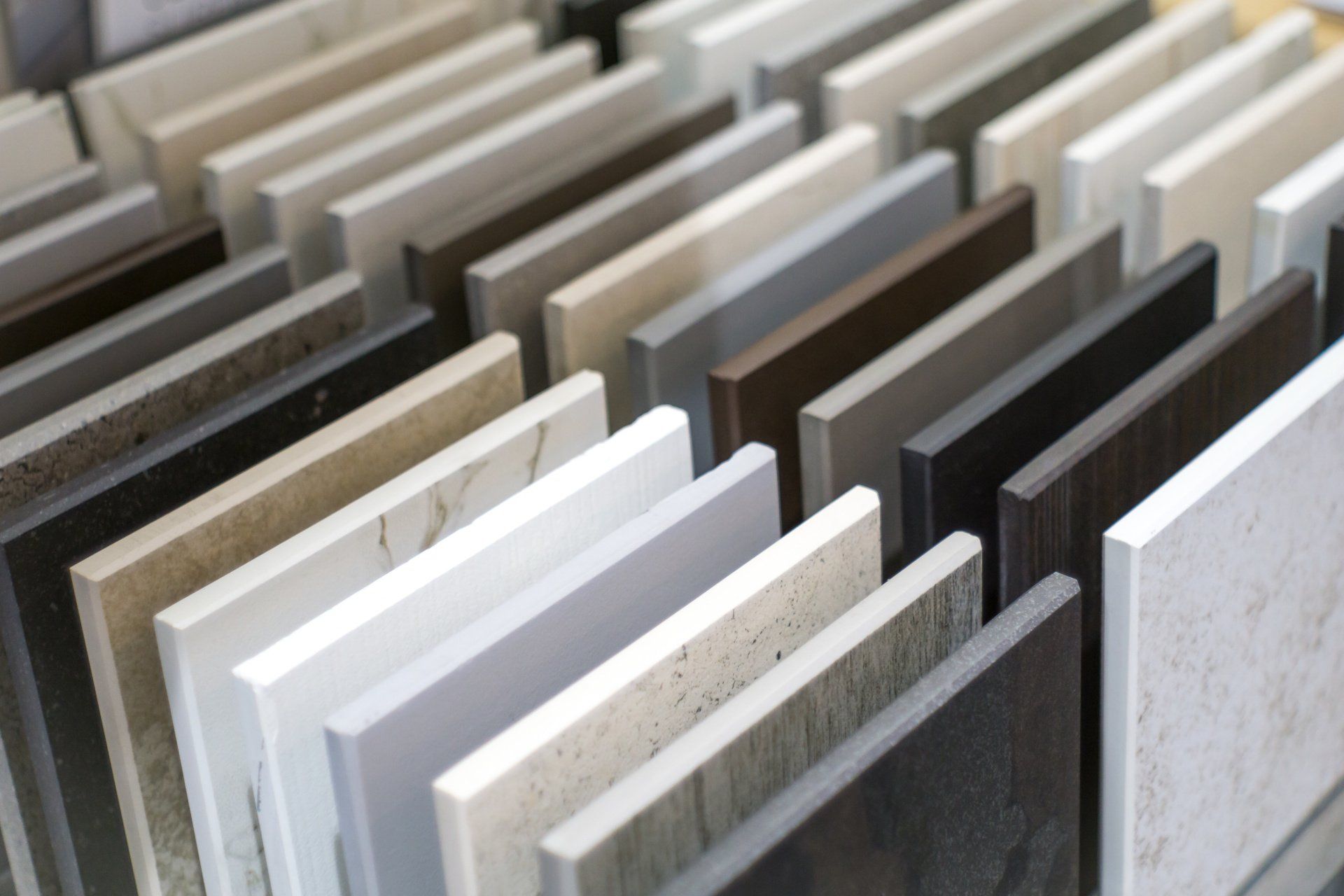
CHOOSING A STONE, GETTING AN ESTIMATE, & PLACING AN ORDER
At your convenience, visit our showroom. There, we will assist you in making a stone selection and will promptly provide a pricing estimate according to the provided cabinet drawings or a rough sketch of your project. If required, we will come for a free in-home estimate.
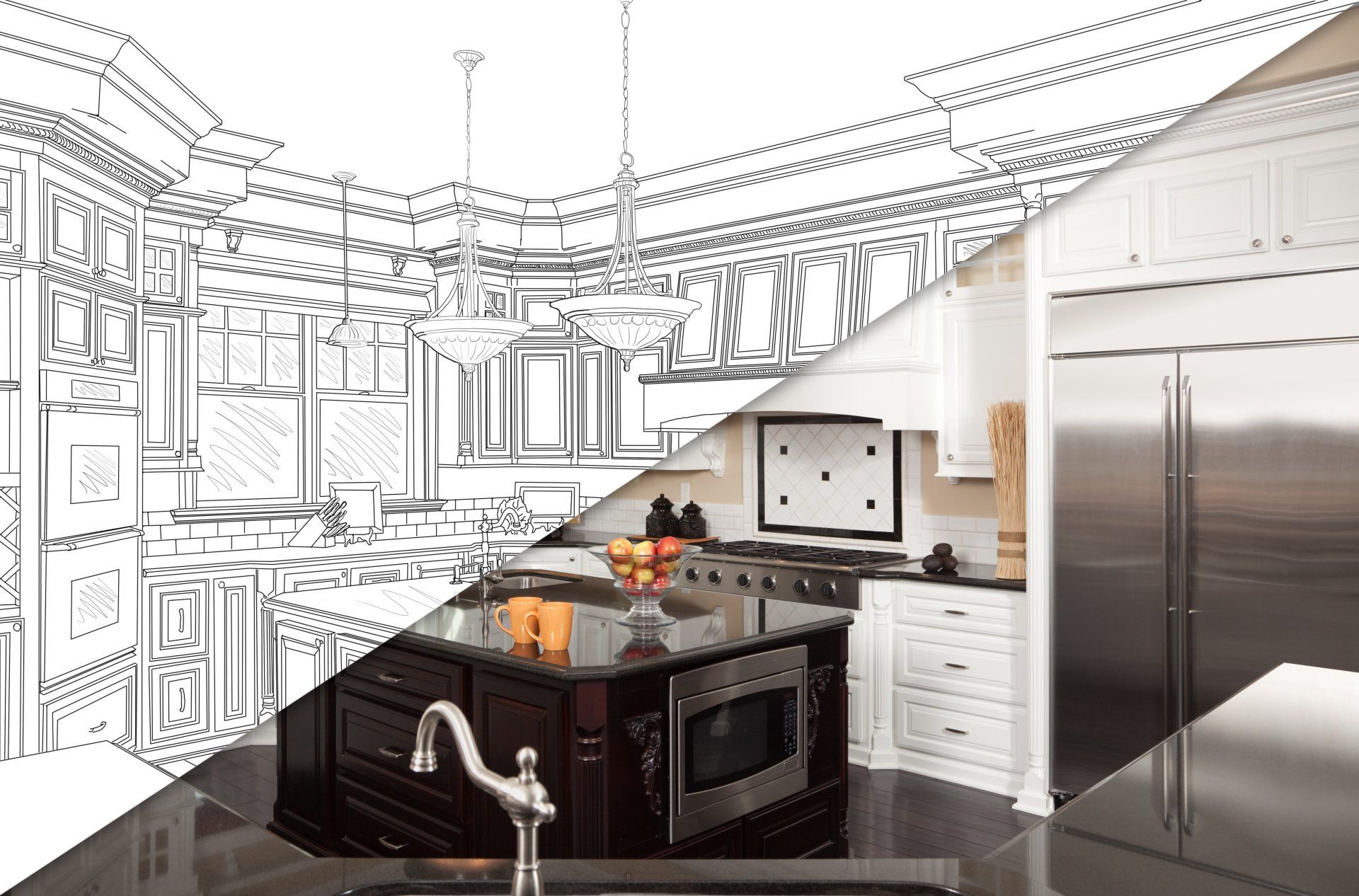
TEMPLATES
After cabinets are installed (or existing ones are used), we come to your home to obtain exact measurements and create a template. Templates for new countertops will be made on bare cabinets. The entire process takes about 2 hours.
Prior to the scheduled template:
1.) All cabinets must be completely installed and level. Incomplete/improper installation may include (but is not limited to) the following:
- Un-level cabinets- cabinets must be level to properly support the stone.
- Cabinets not permanently secured in final location- moving of cabinets after templating can result in a poor fit.
- Having installed upper cabinets that are to sit on top of the stone countertops- these cabinets must be installed after the countertops are in place.
2.) Old countertops must be removed (unless we are providing this service).
3.) Sink must be on-site so that we may take the manufacturer's provided template back to the shop.
The person responsible for decision-making must be present for this scheduled appointment. We will discuss details such as joint location, radius, overhang, and edge detail preferences.
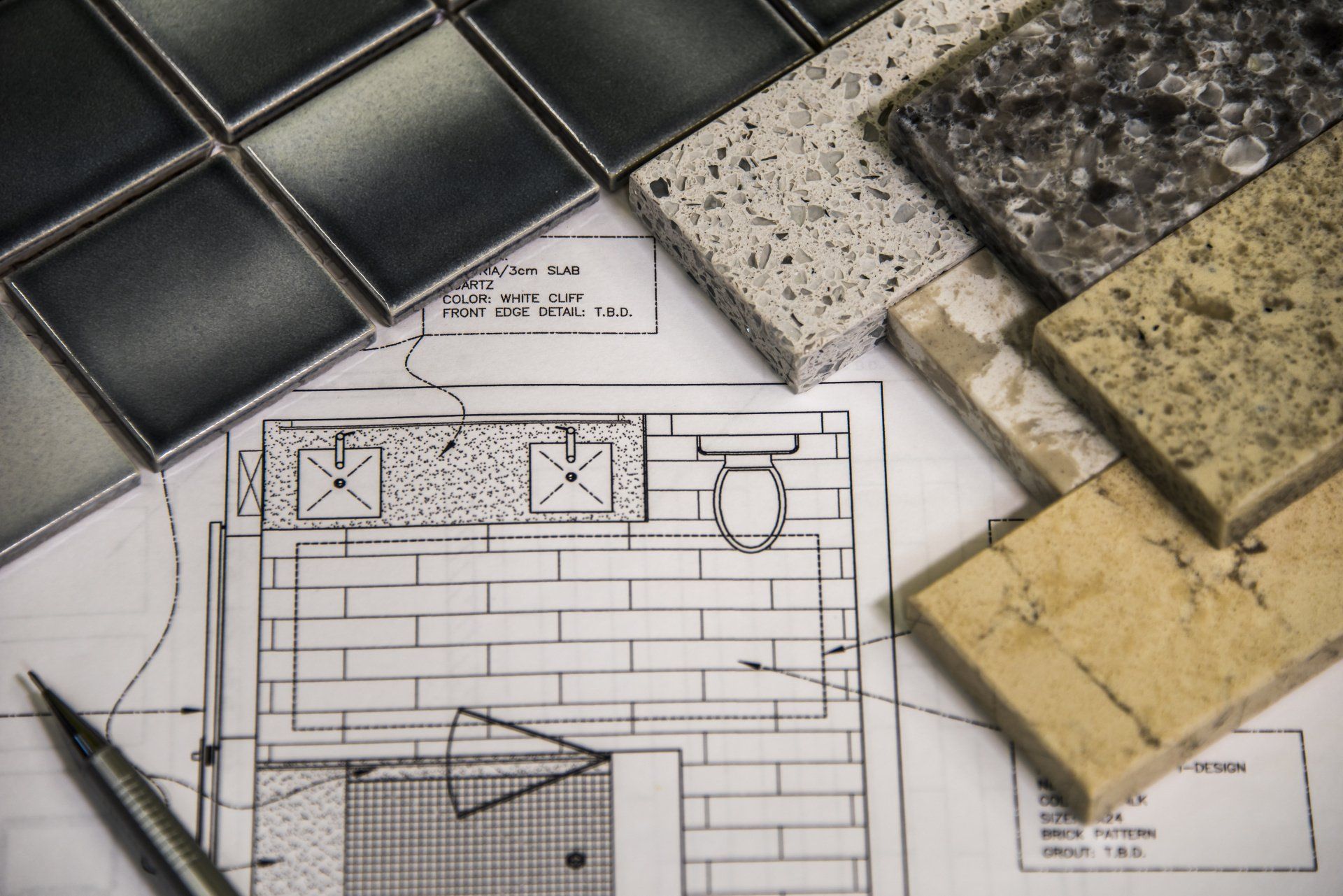
LAYOUT
We invite you to our showroom where you will help direct the placement of the template over your chosen stone all to capture your favorite details of the actual slab.
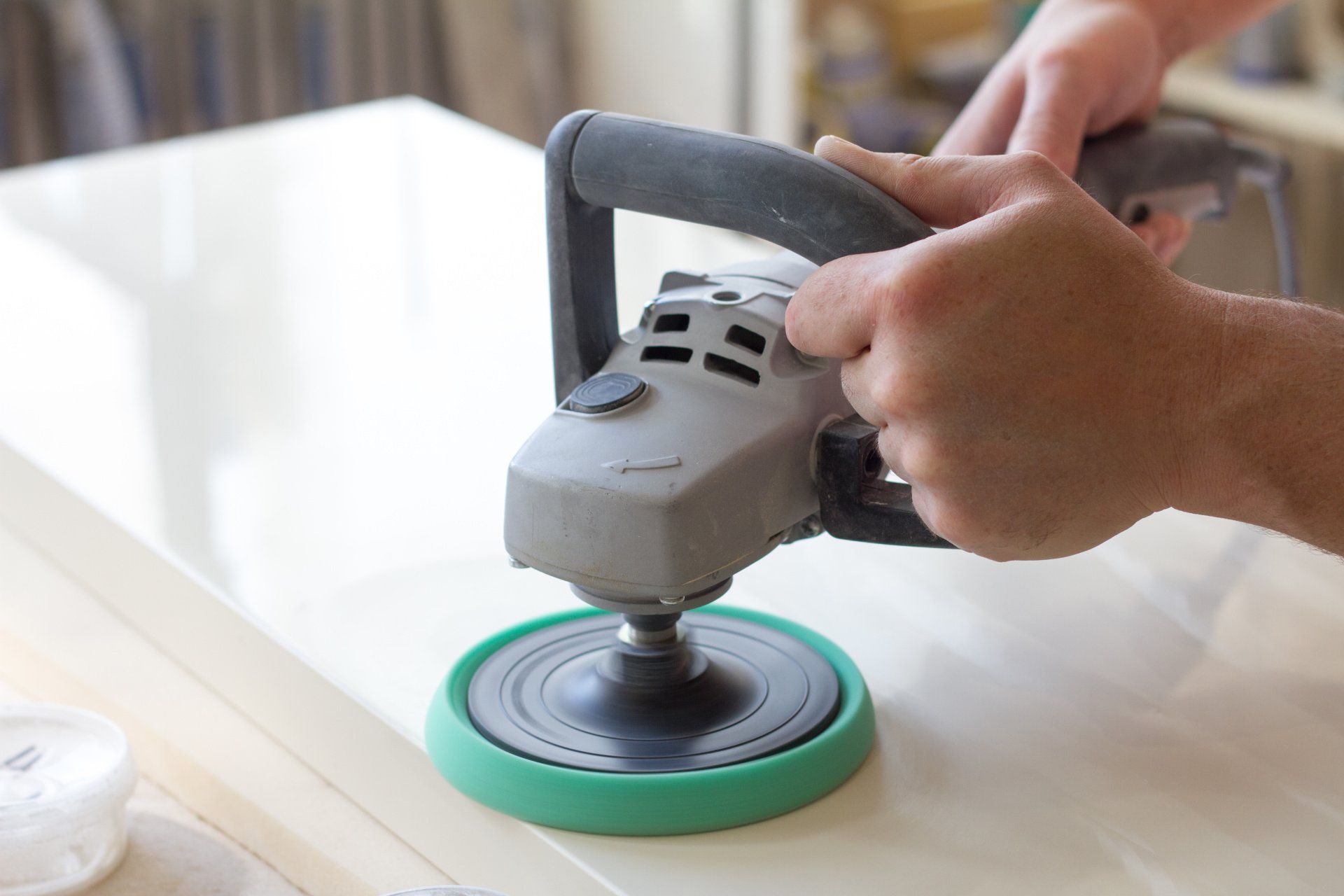
FABRICATION
Actual fabrication will start with the cutting of the slab(s). Fabrication will take approximately four to ten (4-10) days depending on the size and complexity of the job as well as additional jobs currently in production in our shop.
Our experienced and knowledgeable fabricators are instructed to keep the joints/seams to a minimum while maximizing the use of the stone in each slab. After the stone has been cut to the appropriate size, it is then fabricated. Fabrication includes shaping and polishing the edge detail of the stone and opening sink and cooktop cutouts.
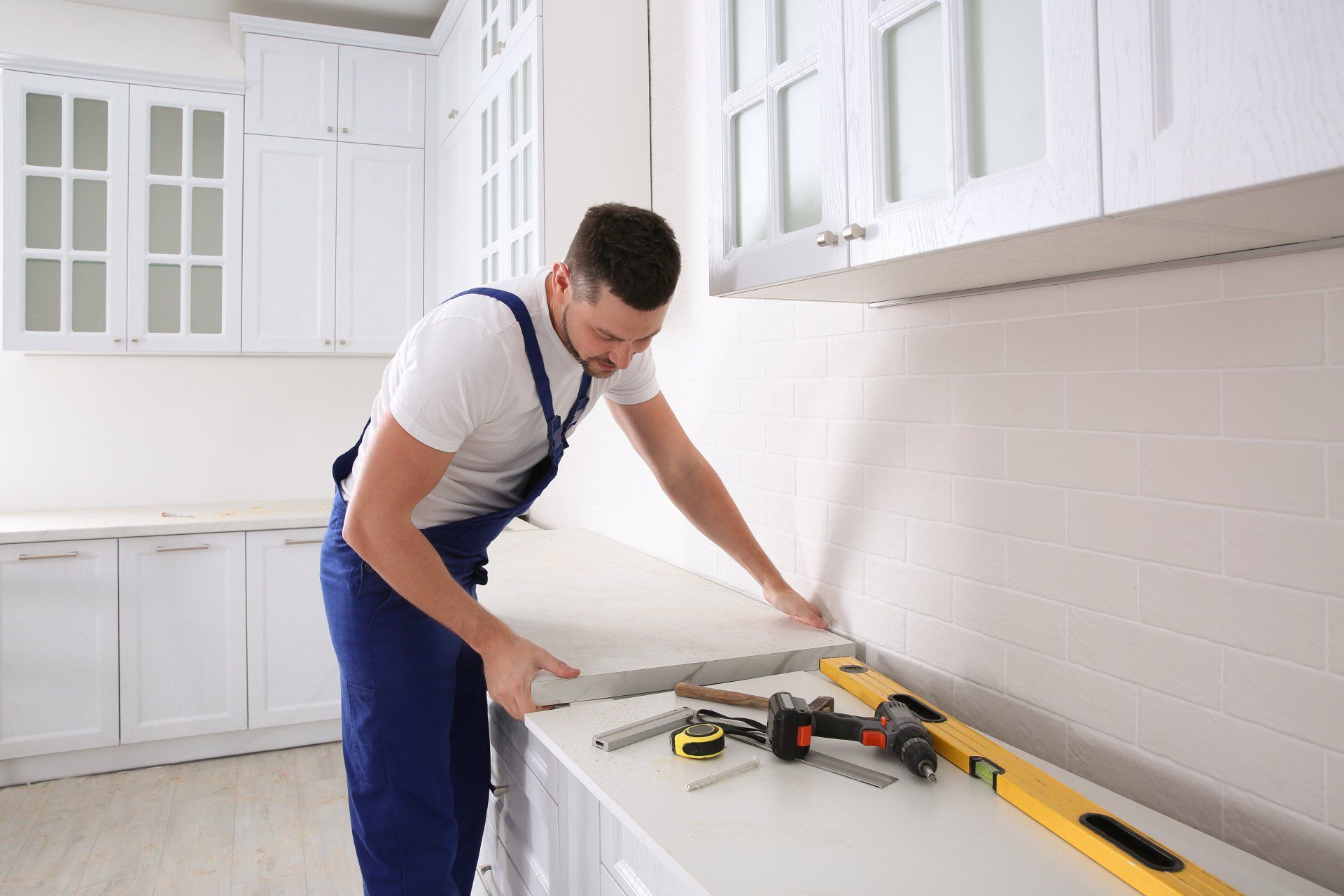
INSTALLATION
We will contact you at least 2-3 days prior to job completion to arrange for a date and time for the installation process. Installation may normally take a few hours, but there are some large jobs that take longer to finish and may be subject to a multiple-day installation.
On your scheduled install date, please have all areas receiving stone clear and accessible. The sink, faucet, and stove top must be disconnected and removed prior to the installation of the new stone countertops. Ventura Stone is not responsible for removing your stove, sink, or upper cabinets that may interfere with installation. Please note, these issues will be addressed if applicable at the time of template on a job by job basis as necessary. Additionally, we will be happy to discuss the specifics of your job site at any time prior to installation.
Our installation staff will be courteous, professional, and knowledgeable during the whole process. They will clean up after themselves and will be careful not to cause any type of damage or mess on the job site. After the installation is completed, they will clean up and leave the job site in the same condition as they found it.
common questions
-
Common Descriptions & Uses
It is a fundamental position of the Marble Institute of America that there exists no such thing as a "bad stone". There do exist however, inappropriate selection of stone for a given application, and also unrealistic expectations of a given stone type in a specific application. The informed selection of natural stone products is also influenced by the tastes of the end user. To some, natural wear, etching, or weathering bring about a hidden charm, or natural "patina" as the stone displays signs of its yielding to the forces encountered in its service. To others, the only acceptable performance is for the stone to maintain its pristine, "as new" look for the entire duration of its service life. Selections of natural stone types are available to satisfy both users, but the proper research must be completed to assure that the selected stone will perform in service with the desired behavior. The key is performance. If a rock is sold within the granite group, the rock should be expected to have performance in that application that is similar, or in some cases superior, to that of a true granite.
-
Cleaning Procedures & Recommendations
Cleaning stone surfaces is easy, all you need is a few drops of neutral cleaner, stone soap (available at most hardware stores) or a mild liquid dish-washing detergent and warm water. Do not use scouring powders, creams, products that contain lemon, vinegar, bleach or other acids on stone surfaces these products are abrasive or contain abrasives that may scratch the surface! Use a clean rag mop on floors and a soft cloth for other surfaces for best results. Using too much soap may leave streaks and marks. Rinse the surface thoroughly after washing with the soap solution and dry with a soft cloth. Change the rinse water frequently.
-
Know Your Stone
Natural stone can be classified into two general categories according to its composition: siliceous stone or calcareous stone. Knowing the difference is critical when selecting cleaning products.
Siliceous stone is composed mainly of silica or quartz-like particles. It tends to be very durable and relatively easy to clean with mild acidic cleaning solutions. Types of siliceous stone include granite, slate, sandstone, quartzite, brownstone and bluestone.
Calcareous stone is composed mainly of calcium carbonate. It is sensitive to acidic cleaning products and frequently requires different cleaning procedures than siliceous stone. Types of calcareous stone include marble, travertine, limestone and onyx. What may work on siliceous stone may not be suitable on calcareous surfaces.
-
Spills & Stains
Identifying the type of stain on the stone surface is the key to removing it. If you don't know what caused the stain, play detective. Where is the stain located? Is it near a plant, a food service area, an area where cosmetics are used? What color is it? What is the shape or pattern? What goes on in the area around the stain? Surface stains can often be removed by cleaning with an appropriate cleaning product or household chemical. Deep-seated or stubborn stains may require using a poultice or calling in a professional.
The following sections describe the types of stains that you may have to deal with and appropriate household chemicals to use and how to prepare and apply a poultice to remove the stain. Types of Stains and First Step Cleaning Actions:
WE RECOMMEND USING OF-THE-SHELF PRODUCTS FIRST, THERE ARE MANY GREAT PRODUCTS THAT ARE SAFER TO USE BEFORE USING HOUSE HOLD CHEMICHALS!
-
Dos & Don'ts of Stone Care
- DO Dust mop floors frequently
- DO Clean surfaces with mild detergent or stone soap
- DO Thoroughly rinse and dry the surface after washing
- DO Blot up spills immediately
- DO Protect floor surfaces with non-slip mats or area rugs and countertop surfaces with coasters, trivets or placemats
- DON'T Use vinegar, lemon juice or other cleaners containing acids on marble, limestone, travertine or onyx surfaces
- DON'T Use cleaners that contain acid such as bathroom cleaners, grout cleaners or tub & tile cleaners
- DON'T Use abrasive cleaners such as dry cleansers or soft cleansers
- DON'T Mix bleach and ammonia; this combination creates a toxic and lethal gas
- DON'T Ever mix chemicals together unless directions specifically instruct you to do so
Call your professional stone supplier, installer or a restoration specialist for problems that appear too difficult to treat.
-
Myths Dispelled: Cleanability
Granite ranked #1 in cleanability when compared to six other countertop surfaces including stainless steel (based on a 1999 study by the Hospitality Institute of Technology and Management).
Marble and granite have the same level of cleanability as engineered stone (based on a 2006 study by the Hospitality Institute of Technology and Management).
-
Myths Dispelled: Price & Maintenance
Price
Natural stone is competitively priced with quartz surface products and often priced lower.
Maintenance
Natural stone is low maintenance often only requiring warm water, mild dishwashing liquid and a soft cloth to maintain its beauty.
Many varieties of natural stone do not need to be sealed, although many are for customer peace of mind.
-
Myths Dispelled: Radon & Individuality
Radon
Granite does not emit dangerous levels of radon (based on technical paper by Dr. Donald Langmiur, PhD, Colorado School for Mines in 1995, confirming that consumers do not have to worry about radon exposure stemming from natural stone in their home).
Individuality
Stone is a product of nature and has its own unique qualities that distinguish it from quartz surface materials. The wonderful character that is offered by vein patterns, color variations, and other design characteristics of stone should be taken into consideration when selecting the perfect stone for your project. Discuss these characteristics with your natural stone supplier.
get a free quote
Contact Us
We will get back to you as soon as possible
Please try again later


